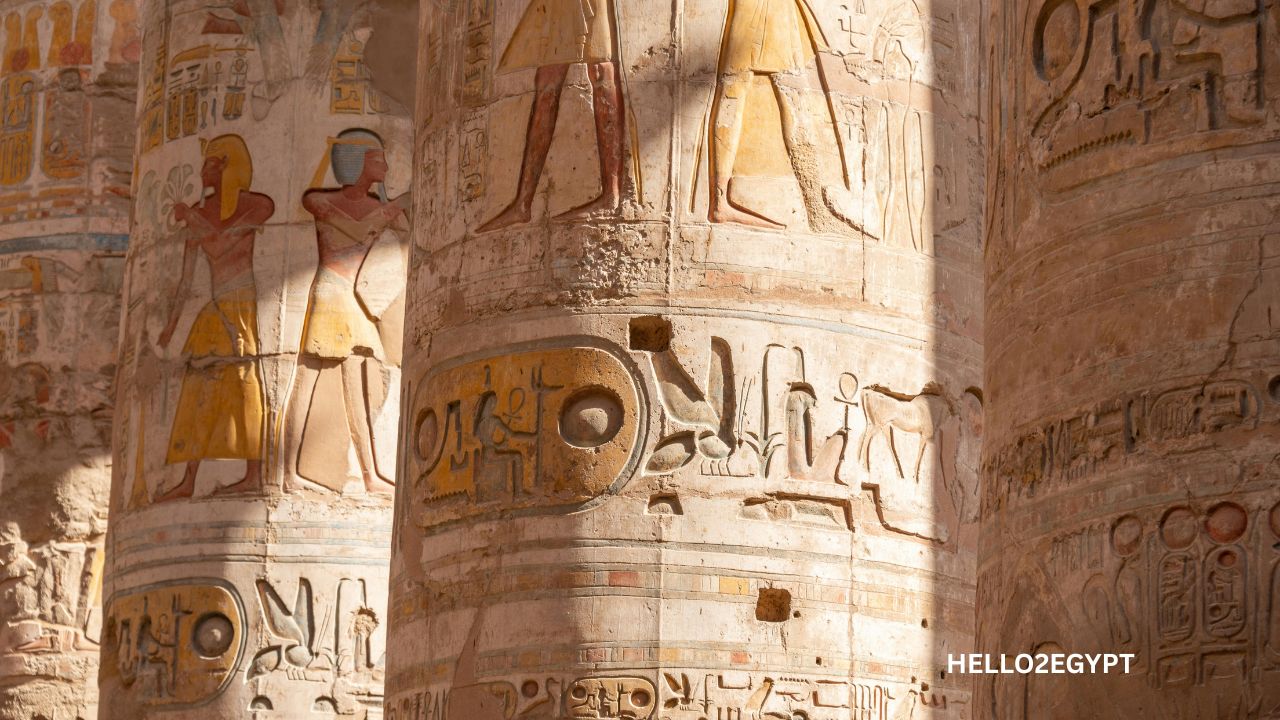Mohamed Sayed created *Hello2Egypt.com to deliver quality historical and culture-rich travel experiences in Egypt. As a young man studying and working in tourism in Egypt, he saw a toursim niche not fully explored in tourism services, history, culture, food and the natural beauty of Egypt. Ash joins him in creating outstanding travel services and bucket-list travel adventures in Egypt for all budgets.
Egypt’s geography ranges from the wetlands of the Nile Delta to the vast Sahara Desert, offering diverse ancient monuments and landscapes for exploration. Unique fertile agricultural lands along the Nile River to the arid deserts of the Sahara provides a rich tapestry of ancient and geographical wonders waiting to be discovered beyond mainstream tourism.
From the ancient Pyramids of Giza nestled on the edge of the desert to the bustling streets of Old Cairo. In 1979 UNESCO designated the Valley of the Kings part of the World Heritage site of ancient Thebes, which also includes Luxor Temple, the Valley of the Queens, and Karnak Temple.The Nile valley (Upper Egypt) is a narrow thread of cultivated land which varies from less than one to several miles in width. The desert and its mountains are are framed by emerald sugar cane fields.Here you immerse in village culture and life.
The Red Sea attracts generations of global explorers, divers, extreme sports enthusiasts and naturalists. The Red Sea Reef is the largest coral reef system in all of Africa and the third largest reef system in the world. It is also the world’s most northern tropical sea. The reef extends 1,240 miles (2,000 km) along the coastline of Africa (Egypt, Sudan, Eritrea).
Additionally, the Red Sea Reef is home to over 1,100 species of fish and 200 soft and hard corals. Approximately 10% of these are endemic and found no where else in the world. There are 44 different species of shark present on the reef. Aswan, a city in southern Egypt, is a popular destination known for its rich history, Nubian culture, and stunning Nile River views. Key attractions include ancient temples like Philae and Abu Simbel, the Nubian Museum, and felucca rides on the Nile.
Wadi Al-Hitan UNESCO SITE, Whale Valley, in the Western Desert of Egypt, contains invaluable fossil remains of the earliest, and now extinct, suborder of whales, Archaeoceti. These fossils represent one of the major stories of evolution: the emergence of the whale as an ocean-going mammal from a previous life as a land-based animal. Fayoum offers natural wonders and archeological sites of Hawara Pyramid and Karanis, Wadi El Rayan waterfalls and lakes, and local culture, pottery and crafts.
The White Desert is part of the Farafra depression in the Sahara Desert. It also features the Farafra Oasis, the Ain El Maqfi Oasis, and the Ain El Wadi Oasis. The park is renowned for the white sands, white sand rock formations, and the introduction to the Great Sand Sea. On the slopes of Mount Sinai, where Moses received the Ten Commandments from God, lies one of the oldest functioning monasteries in the world. It was built by order of the Byzantine Emperor Justinian I (527–565 AD) in 548–565 AD. The eponymous Saint Catherine of Alexandria was martyred in the early 4th century AD. The Siwa Oasis (Arabic: واحة سيوة Wāḥat Sīwah is an urban oasis. It is situated between the Qattara Depression and the Great Sand Sea in the Western Desert, 50 kilometres (31 mi) east of the Egypt–Libya border and 560 kilometres (350 mi) from the Egyptian capital city of Cairo. It is famed as the home to an oracle of Amun, and known as the Oasis of Amun-Ra. The salt lakes of Siwa Oasis are renowned for therapeutic properties, for skin conditions, eye and sinus ailments, and rheumatism. The high salt concentration in the water, including minerals like sodium, magnesium, and calcium, have soothing and healing effects. Siwa also has medicinal and restorative natural hot springs and sand baths.
